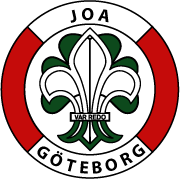Välkommen till en ny termin i Johannebergs scoutkår!
Första mötet för respektive avdelning är:
Spårare (årskurs 2 och 3) tisdag 1/9 kl 18-19:30
Upptäckare (årskurs 4 och 5) onsdag 2/9 kl 18-19:30
Äventyrare (årskurs 6, 7 och 8) onsdag 2/9 kl 18-19:30
QUESTION 10
SIMULATION
You work for an organization that monitors seismic activity around volcanos. You have a table named GroundSensors. The table stored data collected from
seismic sensors. It includes the columns describes in the following table:
The database also contains a scalar value function named NearestMountain that returns the name of the mountain that is nearest to the sensor.
You need to create a query that shows the average of the normalized readings from the sensors for each mountain. The query must meet the following
requirements:
Include the average normalized readings and nearest mountain name.
Exclude sensors for which no normalized reading exists.Exclude those sensors with value of zero for tremor.
Construct the query using the following guidelines:
Use one part names to reference tables, columns and functions.
Do not use parentheses unless required.
Do not use aliases for column names and table names.
Do not surround object names with square brackets.
Part of the correct Transact-SQL has been provided in the answer area below. Enter the code in the answer area that resolves the problem and meets the stated
goals or requirements. You can add code within the code that has been provided as well as below it.Use the Check Syntax button to verify your work. Any syntax or spelling errors will be reported by line and character position.
A. Check the answer in explanation.
Correct Answer: A
Explanation
Explanation/Reference:
Correct Answer:
SELECT Average(NormalizedReading), NearestMountain(SensorID)
FROM GroundSensors
GROUP BY NearestMountain(SensorID)
WHERE TREMOR IS NOT 0 AND NormalizedReading IS NOT NULL
GROUP BY is a SELECT statement clause that divides the query result into groups of rows, usually for the purpose of performing one or more aggregations on
each group. The SELECT statement returns one row per group.
Reference: https://msdn.microsoft.com/en-us/library/ms177673.aspx
70-410 dumps
QUESTION 11
SIMULATION
You create a table named Sales.Orders by running the following Transact-SQL statement:
You need to write a query that meets the following requirements:
removes orders from the table that were placed before January 1, 2012
uses the date format of YYYYMMDD
ensures that the order has been shipped before deleting the record
Construct the query using the following guidelines:
use one-part column names and two-part table names
do not use functions
do not surround object names with square brackets
do not use variables
do not use aliases for column names and table namesPart of the correct Transact-SQL has been provided in the answer area below. Enter the code in the answer area that resolves the problem and meets the stated
goals or requirements. You can add code within the code that has been provided as well as below it.
Use the Check Syntax button to verify your work. Any syntax or spelling errors will be reported by line and character position.
A. Check the answer in explanation.Correct Answer: A
Explanation
Explanation/Reference:
Correct Answer:
DELETE FROM Sales.Orders
WHERE OrderDate < '2012-01-01' AND ShippedDate NOT NULL
References:
https://msdn.microsoft.com/en-us/library/ms189835.aspx
https://msdn.microsoft.com/en-us/library/bb630352.aspx
QUESTION 12
SIMULATION
You have a database that contains the following tables.
You need to create a query that lists the lowest-performing salespersons based on the current year-to-date sales period. The query must meet the following
requirements:
Return a column named Fullname that includes the salesperson FirstName, a space, and then LastName.
Include the current year-to-date sales for each salesperson.
Display only data for the three salespersons with the lowest year-to-year sales values.
Exclude salespersons that have no value for TerritoryID.
Construct the query using the following guidelines:
Use the first letter of a table name as the table alias.
Use two-part column names.
Do not surround object names with square brackets.
Do not use implicit joins.
Use only single quotes for literal text.
Use aliases only if required.Part of the correct Transact-SQL has been provided in the answer area below. Enter the code in the answer area that resolves the problem and meets the stated
goals or requirements. You can add code within the code that has been provided as well as below it.
Use the Check Syntax button to verify your work. Any syntax or spelling errors will be reported by line and character position.A. Check the answer in explanation.
Correct Answer: A
Explanation
Explanation/Reference:
Correct Answer:
Terminsprogram kommer upp inom kort på respektive avdelnings sida.
